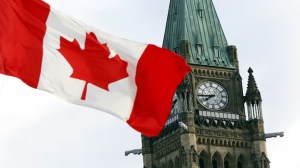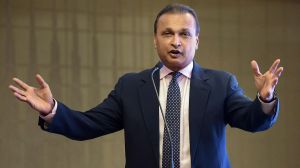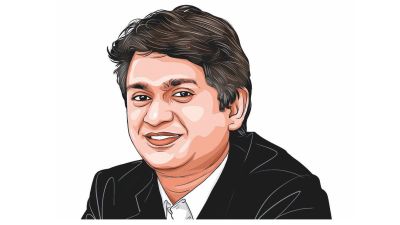India’s healthcare spending in the Budget has hovered around 2% of GDP even as there is a stated aim of the National Health Policy to raise it to 2.5% by 2025. High out-of-pocket expenditure and a shortage of healthcare personnel continue to be major issues, explains Ritwik Sharma:
India’s spending on health
According to The Economic Survey 2023-24, the central government’s health expenditure rose to 1.9% of the gross domestic product (GDP) in 2023-24, from 1.28% in 2018-19. The government aims to increase public health spending to 2.5% of the GDP by 2025, a target that has been envisioned in the National Health Policy 2017 as well as emphasised by the 15th Finance Commission. Although focus on health has been increasing, data shows that allocation percentages have remained stagnant. Per the Observer Research Foundation, the overall percentage of the Budget allocated to the health sector has shown a slow decline at around 2%. For instance, in FY14, the sector received 2.26% of the Budget allocation; in Budget 2024 it stood at 2.05%. Also, the National Health Policy recommends state governments to spend 8% of their budgets on healthcare, but they fall short. The average allocation across states was 6.2%, the 2024-25 Budget Estimates show. The Union Budget 2024 allocated Rs 90,958 crore to the sector, a hike of 12.9% over Rs 80,517.62 crore in the Budget (revised estimates) for FY2023-2024.
How does India compare globally?
In 2021, worldwide spending on healthcare accounted for 10.4% of the global GDP. Latest World Bank data on the world development indicators show that in 2021, India spent 3.3% of the GDP, which is also the average spent by South Asian countries. The health ministry’s National Health Account (NHA) estimates reported a hike in the share of government health expenditure in the GDP from 1.13% in FY15 to 1.84% in FY22, also suggesting its response to challenges in a pandemic year. Per a report by the Centre for Social and Economic Progress (CSEP) last year, India’s health index has improved over the years but still lags behind a majority of its peer economies in some crucial indices including health expenditure. For instance, among nine Asian and BRICS nations, India fared only better than Bangladesh in this metric.
Key healthcare concerns
The CSEP report points out that primary health centre infrastructure has not kept pace with the growing population, and more worryingly, a massive shortage of healthcare resources especially in rural India. It adds that India has focused on curative health, largely ignoring preventive health whose infrastructure too is concentrated in urban areas. And though the NHA estimates show a decline in out-of-pocket expenditure for accessing healthcare, it still is one of the highest in the world. To this end, the government should prioritise spending on health promotion and disease prevention to reduce the burden of disease and out-of-pocket expenditure, suggests Ali Mehdi, founder and CEO of health advisory firm UHC360. “The target should be to increase healthy life expectancy (HALE) and reduce inequities in it. The amount and areas of expenditure should not be about a pre-conceived number (e.g. 2.5% of GDP), but based on health needs of those with the lowest HALE. Efficiency of allocation and spending has to increase,” says Mehdi.
Allocations in the last Budget
The 2024 Union Budget saw increased spending on centrally sponsored schemes such as the National Health Mission, Ayushman Bharat Pradhan Mantri Jan Arogya Yojana (PM-JAY), and the National Tele Mental Health Programme. AB-PMJAY saw a 7% funding boost to Rs 7,300 crore, as insurance coverage was extended to ASHA and Anganwadi workers. The PM Ayushman Bharat Health Infrastructure Mission also received a significant 63% increase, reaching Rs 3,756 crore.
It also announced scrapping of customs duties on three cancer treatment drugs, and on components of X-ray tubes and digital detectors. In October, the PM-JAY was expanded to extend health coverage for all senior citizens aged 70 years and above irrespective of income. Union health minister JP Nadda said last week that 60 million people above 70 years of age had been added to the scheme that has an annual cover of Rs 5 lakh, taking the overall number to more than 620 million. Experts have, however, raised questions over the infrastructure available to support the scheme.
State of medical education
FY24-25 also saw an increased budget for the All India Institute of Medical Sciences (AIIMS), New Delhi. The finance minister also proposed setting up of medical colleges, including in Bihar, in both the Union Budget and the Interim Budget earlier in the year.Per health ministry data, the number of MBBS seats increased from 51,348 in 2014 to 112,112 as of July 2024, while the number of medical colleges rose from 387 to 731.
However, systemic issues such as teacher shortage and quality of education continue to plague colleges. Data shared by the government in the Rajya Sabha in December 2023 revealed that 39.2% of the faculty posts in 20 AIIMS were vacant. Funding for human resources and medical education had fallen by 16% in Budget 2024.








